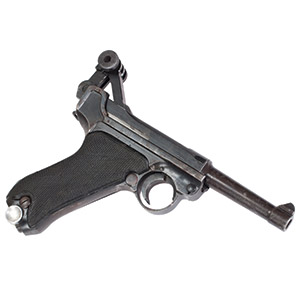

As more rounds are added, the nosedive gap gets bigger.Ī prototype straight-walled cartridge was made from. When loading a single column magazine, a gap also will eventually appear between the front of the top round and the one under it. The effect of cartridge taper becomes apparent when rounds are loaded in a magazine. The straight-walled 9mm Automatic doesn't produce this curvature. These rounds are not positioned as they would be in most magazines, but it illustrates how the 9mm Luger's taper contributes to cartridge angle. The taper affects cartridge angle when they are stacked together, as shown below. Within any given box of ammunition the amount of taper was relatively consistent. The least amount of average taper was 0.0065-inches and the most was 0.0135-inches. Samples of 15 different factory loads in the author's possession had an average taper of 0.0094-inches. SAAMI 9mm Luger specifications show a taper of 0.010-inches (head to case neck 0.014-inches for rim to case mouth). Taper is defined as case head diameter minus case neck diameter. Not all 9mm Luger ammunition has the same amount of taper. Nosedive is less problematic in double column magazines, but it depends on specific magazine designs. Even straight-walled cartridges nosedive, but cartridge taper makes it worse. Nosedive is an inherent problem in most single stack magazines. The straight-walled 9mm Automatic produces no gap. But when the cartridges are placed along side their peers, the shape of the 9mm Luger's taper becomes obvious by producing a gap between the rounds at the case neck. The difference in the shape of the case is not obvious, because the 9mm Luger's taper is slight. This figure shows a prototype 9mm Automatic cartridge along with a 9mm Luger cartridge. It is a potent cartridge for its size and offers good performance with well-designed bullets.īut the cartridge has a troubling flaw: it's tapered. The 9mm Luger has become especially popular for small, compact carry guns intended for self-defense. Frank Barnes (2006) notes that it is the most widely used cartridge in the United States. It is chambered in handguns, submachine guns and rifles, and is the standard NATO round for handguns. Since then, the 9mm Luger - also known as the 9mm Parabellum, 9X19, 9mm NATO or just the 9mm - has become one of the most popular cartridges on the planet. It has been flawed since its development around 1902 by Georg Luger for his famous Luger pistol.


 0 kommentar(er)
0 kommentar(er)
